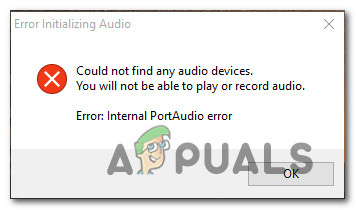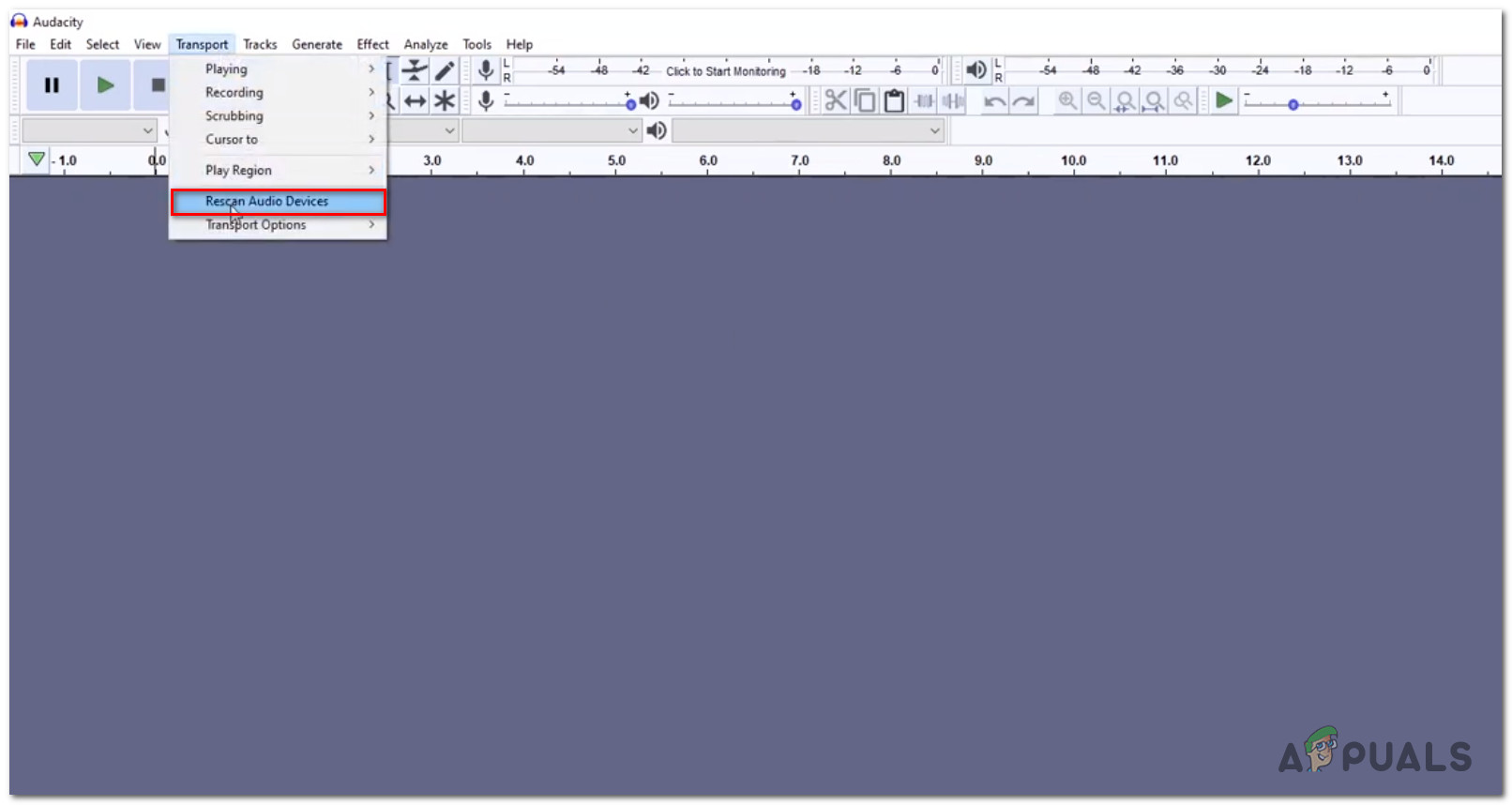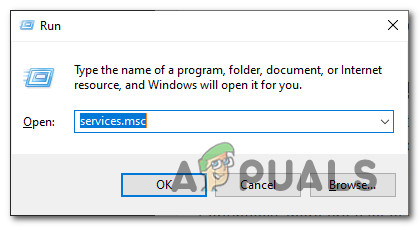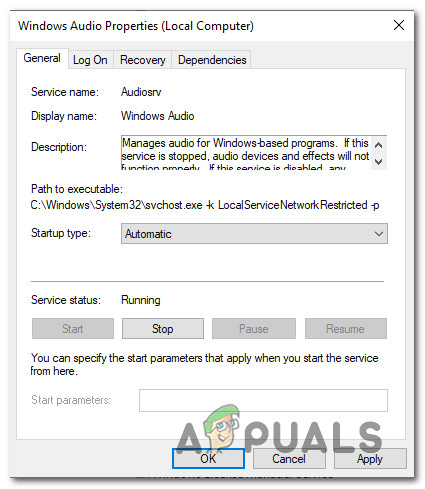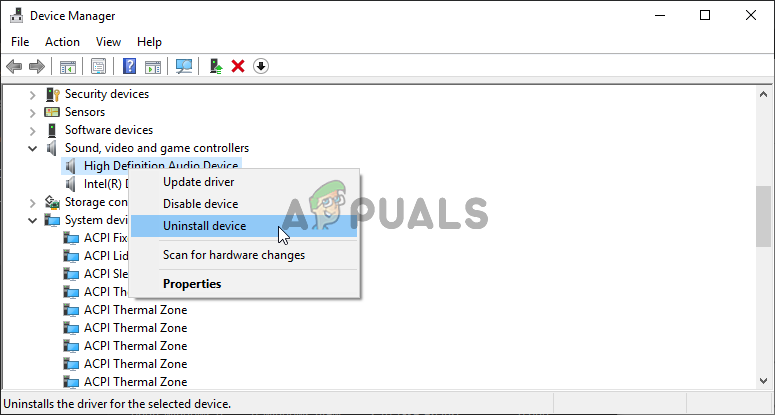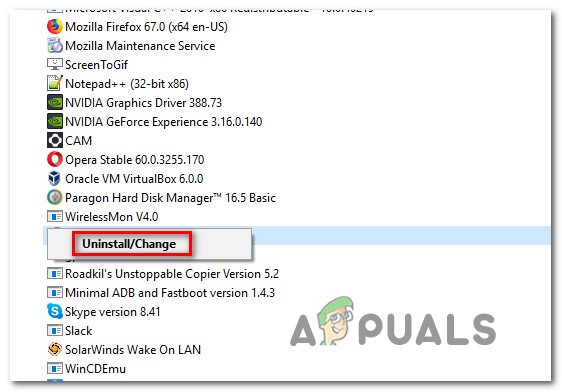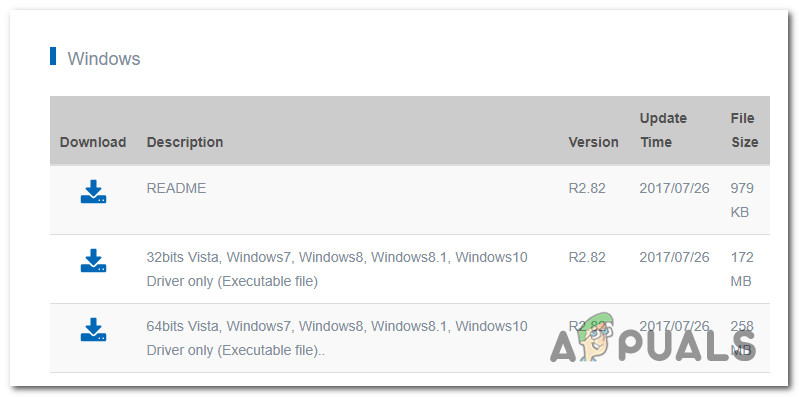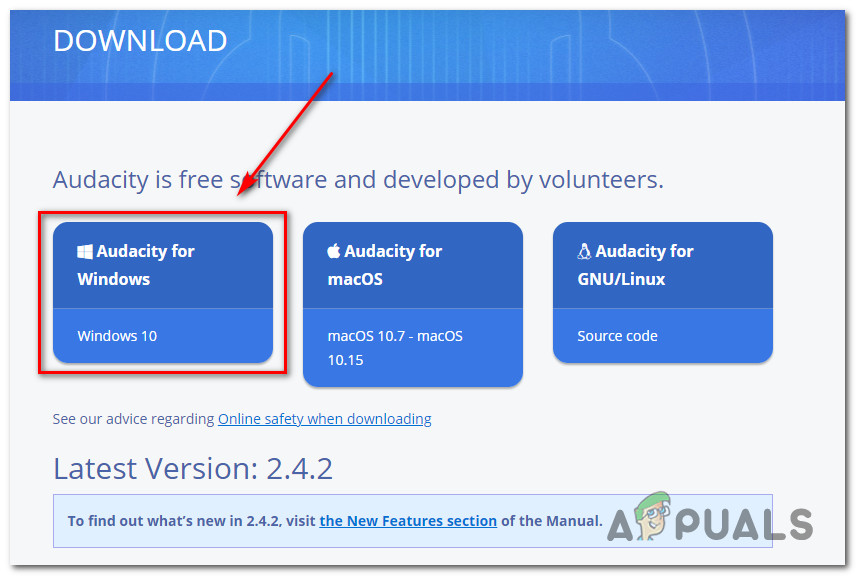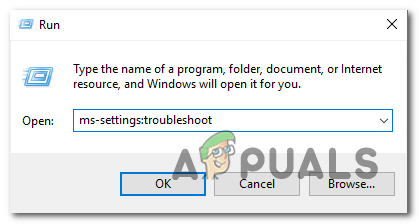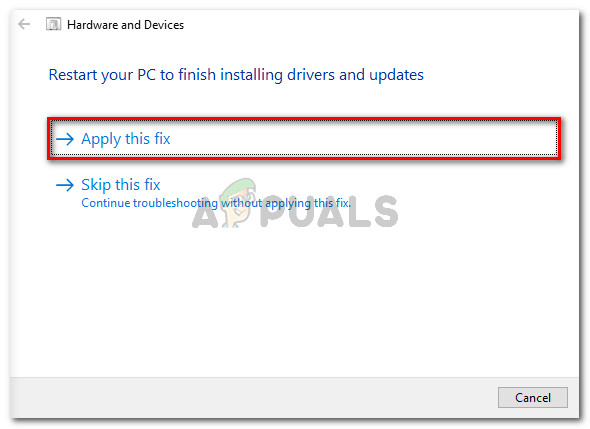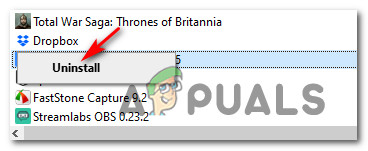We’ve searched the web for every potential cause that might trigger this error message. And as it turns out, there are several different causes that might cause this problem on Windows 10. Here’s a shortlist with every potential culprit: Now that you know every potential culprit, go through every potential fix below in the same order they’re presented. One of them should fix the issue for you:
Method 1: Rescanning Audio Devices in Audacity
As it turns out, Audacity is a little slow in taking into consideration the latest changes you made to your audio devices. So if you see the ‘Internal PortAudio error‘ right after you made some changes to your audio devices (plugged, unplugged something, or reinstalled drivers), you should be able to fix this problem by forcing Audacity to rescan the Audio Drivers. This is a universal fix that is confirmed to work in a variety of documented user cases, so ideally, you should start with this. To force the Audacity program to scan for changes in your Audio Devices, open the app and use the ribbon at the top to click on Transport. Next, from the menu that just appeared, click on Rescan Audio Devices and wait for the operation to complete. After you do this, go ahead and restart your Audacity program and see if you are now able to open it without seeing the same ‘Internal PortAudio error‘. If the same problem is still occurring, move down to the next method below.
Method 2: Enabling the necessary Services
According to some affected users, the ‘Internal PortAudio error‘ issue can also occur if you have a couple of critical audio services essential to Audacity (Windows Audio and Windows Audio Endpoint Builder) disabled in your Services menu. This issue is even more likely if you’re encountering similar sound issues with other applications. In this case, you should be able to fix the problem by accessing the Services screen and ensuring that the two essential services are enabled. Here’s a step by step guide that will show you how to do this: If the same ‘Internal PortAudio error‘ issue is still occurring, move down to the next potential fix below.
Method 3: Enabling every Playback and Recording Device
First things first, you should start this troubleshooting guide by ensuring that you have no disabled recording and playback device in your Sound menu. This is important because Audacity is notoriously known for malfunctioning when it detects constraints in relation to the devices that it can use. Fortunately, there are a lot of affected users that managed to fix this issue by going into the Sound menu of their Windows 10 computer and ensuring that there aren’t any disabled devices. Note: If you have any recording or playback devices that you don’t want Audacity to use, it’s better to plug them out instead of disabling them. This will avoid errors of this kind. If you’re looking for step-by-step instructions on enabling every playback and recording device, follow the instructions below: In case the same issue is still occurring when you try to open Audacity, move to the next potential fix below.
Method 4: Installing / Reinstalling the audio Drivers
As it turns out, this issue can also occur if you’re dealing with some kind of corruption associated with the sound driver that you’re actively using. Another potential scenario (if you’re using a headset) is that you’re using an outdated driver for playback or recording that’s interfering with Audacity’s ability to recognize your audio devices. There are a lot of users that confirmed they were able to fix the problem by reinstalling the sound driver and the USB controller driver (if they were using a headset) Here’s a quick guide on how to do this: If the same Internal PortAudio error is still occurring even after you followed the instructions above, move down to the next potential fix below.
Method 5: Reinstalling the Realtek Audio driver (if applicable)
If you’re using Realtek Audio as the default audio driver, chances are you’re seeing this error either because you’re using an outdated version or because your current Realtek installation currently contains some corrupted files that are causing the Internal PortAudio error in Audacity. If this scenario is applicable, you should be able to fix the problem by uninstalling your current Realtek audio drivers and installing the latest compatible version through the official channels. This potential fix was confirmed to be effective by a lot of affected users. If you’re looking for step-by-step instructions, follow the instructions below: In case the same ‘Internal PortAudio error is still occurring, move down to the next potential fix below.
Method 6: Reinstalling the Audacity Suite
According to some affected users, this problem can also occur due to some kind of corruption that’s currently affecting the current Audacity installation. And since Audacity doesn’t have a reliable auto-updating function, it’s also possible that the version you’re using is conflicting with a Windows update that was recently pushed by Microsoft. If this scenario is applicable, you should be able to fix the problem by uninstalling your current Audacity version and installing the latest version from the official download page. In case you’re looking for step-by-step instructions, follow the instructions below:
Method 7: Running the Audio Troubleshooter (Windows 10 ONLY)
If none of the methods above have worked for you, you should also consider the possibility of a frequent Windows-related glitch that is affecting your audio device. Fortunately, Windows 10 includes a built-in tool that’s very efficient in fixing situations like this one by running the Audio Troubleshooter and applying the recommended fix. This potential fix is confirmed to work by a lot of affected users that whee previously seeing the ‘Internal PortAudio error‘ when attempting to open the Audacity application. If you didn’t run this type of scan before, here’s a quick step-by-step guide on how to do it: If the same issue is still occurring, move down to the final potential fix below.
Method 8: Uninstalling DroidCam Virtual Audio Driver (if applicable)
If none of the potential fixes above have worked for you and you’re using Droidcam, you’re most likely dealing with a well-known conflict that is affected Windows 10 users that are using Audacity on an OS installation where a Droidcam driver is also installed. If this scenario is applicable, the only way to fix the problem is to uninstall the audio driver from DroidCam. I know this is not the ideal fix, but it’s the only thing that works in this particular scenario. Here’s what you need to do to eliminate the conflict:
How to Fix Audacity Error Code 9999 ‘Unanticipated Host Error’ ?Fix: Audacity ‘Error while opening sound device’Fix: Audacity Could not Find any Audio DevicesHow to Move a Track in Audacity
